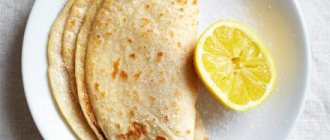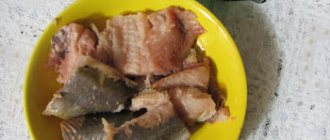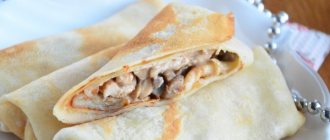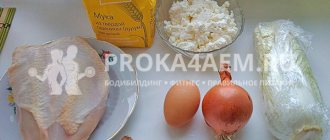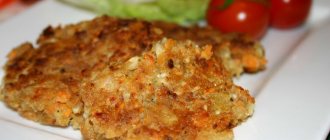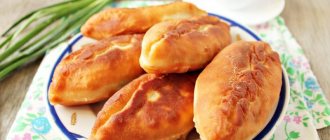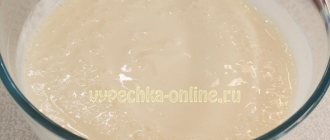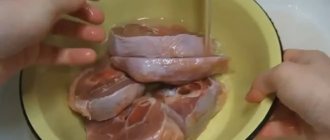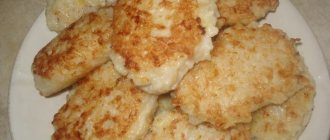Video recipes for making pancakes
Thanks to our videos, every housewife will understand how easy it is to prepare pancakes with a variety of fillings. The recipes will be useful in the household not only on Maslenitsa, but also on weekdays, when you want to please your loved ones with something very simple and tasty. The viscosity of the filling is a mandatory requirement, regardless of the composition. Then it will stay well inside and will not crumble ahead of time. The cooking process will take 90 minutes maximum. Fry only one side when using filling ingredients. The second one browns easily in the oven.
The question of what oil to fry pancakes in is far from idle. After all, there are many recipes for this delicious dish. There are Russian pancakes, for which yeast is added to the dough. The Ukrainian recipe uses sour milk, kefir or whey. In this case, you get thin, delicate, lace-like pancakes. You can pour vegetable oil into the dough (at the final stage of kneading). Then such pancakes can be fried in a dry frying pan. In a word, each recipe for this dish involves the use of a certain type of oil for heat treatment. But what do you need to know so that the first pancake is not lumpy? And also the second and third? You will read the secrets of properly preparing pancakes in this essay.
Pancakes are baked or fried
Understanding this issue, it is worth starting with historical information:
Tatiana Sinitskaya
Once upon a time in the recent past, before gas and electric stoves appeared, pancakes were baked in the oven. With the advent of, so to speak, “civilization,” pancakes began to be fried in a frying pan. The new phrase “fry” has entered the everyday life of modern people, but it has not replaced the word “oven.”
Summarizing the above, we can accurately answer the question: “are pancakes baked or fried?”, then the correct word should be: “pancakes are baked.” It is this word that those who want to speak Russian correctly try to use. This phrase is most likely used more out of habit, although it has long lost its literal meaning.
Previously, our ancestors baked pancakes with seasoning, when the dough was kneaded and the filling was prepared. For example, boiled eggs with dill, homemade sausage or ham, fish fillet, chopped onions, fried fresh cabbage, mushrooms, berries, apples or other fruits and vegetables. There were quite a lot of options.
Pancakes are baked or fried
The dough was poured into the frying pan, the filling was placed on top and the dough was poured again. They baked pancakes in the oven, and on the one hand, because due to the heat that hit them from all sides, they were well baked inside, browned, and there was no need to turn them over.
Interesting fact: In ancient times, a pancake frying pan was a symbol of wealth, so it was a necessary attribute of every girl’s dowry.
The first damn thing is lumpy
Another historical fact can be studied about the origin of the word “pancake”. Previously, it sounded like “mlyn” (from the verb “to grind”) and meant “a product made from chalk.” So the words “pancake” and “mill” historically go back to the same root.
Another well-known expression “the first pancake is lumpy” is about an unsuccessful first attempt. There is a story circulating on the Internet that in fact the pancake is not lumpy, but - to whom? - comas, as bears were supposedly called in Ancient Rus', they woke up from winter hibernation just on Maslenitsa, and they were given the first pancakes.
This story is complete nonsense. The word “com” in the meaning of “bear” is not found in ancient monuments, and our ancestors were not so stupid as to go with pancakes to hungry bears. So the first damn thing is just lumpy, with an “o”.
If you want to speak correctly, say “bake pancakes”, and you can safely fry the rest. And don’t forget to follow the recipes and techniques for baking pancakes, otherwise they will turn out lumpy.
Lastly, what difference does it make between “baked or fried”, the main thing is to gobble it up on both cheeks.
I like2I don't like1
Pan
There are three factors that play a decisive role in ensuring that products do not burn or stick. The first is the dough. Don't make it sweet. Sugar promotes burning and sticking of the product to the pan. If the pancake still breaks, you need to add an egg and a little flour to the dough. You should also know when to stop pouring the base into the pan. There should not be too much dough, even if we bake thick pancakes. The second factor is the frying pan. It would be better if it was cast iron. This porous material is gradually saturated with the oil in which the pancakes were baked, and over time a natural non-stick coating is formed on it. Cast iron cannot be damaged by scratches, like a Teflon frying pan. This metal can withstand temperature changes very well. And it doesn’t matter what you use to fry pancakes or what kind of oil you pour into the frying pan, the main thing is that this utensil is not used for anything else. There are modern alternatives to timeless classics. These are frying pans with ceramic, granite or marble coating. They cost more than Teflon ones, but their quality is higher. But aluminum and light metal frying pans are absolutely not suitable for baking pancakes.
cooking method
To prepare delicious, thin pancakes on Snezhka, prepare a deep bowl so that it is convenient for you to knead the dough into it. Combine the eggs with sugar in a bowl and whisk them a little with a whisk. Then add Snowball, vegetable oil and flour sifted through a sieve to the eggs. This is necessary so that the flour becomes airy and further enriches the dough with oxygen. Mix everything well. To achieve a liquid consistency of the dough, add a little water to it and immediately mix it in. To bake pancakes, take a pancake pan and heat it until hot. Before the first pancake, grease the frying pan a little with vegetable oil. Pour a little liquid pancake batter onto the hot frying pan and spread it over the entire surface in a thin layer. When the pancake begins to move away from the walls of the frying pan and becomes golden in color, turn it over and let it bake on the other side. Bake all the pancakes in this way. Remove the finished pancakes from the pan using a spatula and place on a large plate. Cover the pancakes with a lid to steam them. Otherwise, when opened, they will dry out. You can prepare such pancakes at any time of the day and for any feast. They can be supplemented with sour cream, condensed milk or jam. You can also wrap any filling in them - sweet or not. If you plan to wrap savory filling in them, then reduce the amount of sugar. By the way, initially adjust the amount of sugar to your taste, since Snowball itself is quite sweet. Pancakes have always been and will be very popular. They are prepared in various variations, including for Maslenitsa. You can prepare them for Sunday breakfast to please the whole family. You can also enjoy them throughout the day, just as a snack. Thin, light pancakes will undoubtedly please the whole family. And everyone will ask for more.
Types of fats
In cooking, butter, olive, corn, sunflower, rapeseed, palm oil, margarine, spread, lard and lard are used for frying various dishes. As you can see, the choice is quite large. What oil should you use to fry pancakes so that they turn out golden and, as if by magic, separate from the bottom of the pan and slide into the plate? To answer this question, we need to understand the smoke point. This is a very important point, and not only in the culinary aspect, but also in the field of health care. After all, if the oil passes the smoke point, irreversible changes occur in its chemical composition and carcinogens are released. In this regard, cooks never fry with flaxseed oil, since it has a low boiling point. And good pancakes are made only when we heat the pan well.
Sour pancakes
Some prefer sweet pancakes, others thin or spongy. This recipe is for lovers of sour pancakes. And it turns out there are a lot of them. And no wonder, because pancakes made with sour milk turn out fluffy, rosy, unusually tasty, sweet and sour.
It is better to serve them with sour cream, melted butter or honey. By the way, sour pancakes can also be stuffed, for example, with cottage cheese or minced meat with fried onions.
The recipe includes baking soda. There is no need to extinguish it with vinegar; there is enough acid in milk.
Ingredients
: 0.5 liters of sour milk, 2 tbsp. tablespoons of vegetable oil, starch and granulated sugar, ½ teaspoon each of soda and salt, 3 eggs, 8 tbsp. spoons with a small hill of wheat flour.
Cooking method
Grind eggs with salt, sugar, add milk and add soda. Mix.
In another bowl, mix flour with starch. Gradually pour the egg-milk mixture into the flour and stir continuously to prevent lumps from forming. At the end, add vegetable oil and fry the pancakes.
Here they are - real Russian pancakes, made with yeast. Probably the most delicious of all. Yeast pancakes are best served with caviar. But even with sour cream it will be very, very good. And in general, they can be served with absolutely any filling. The pancakes turn out tender, lacy, airy, and delicious. And how beautiful! And, most importantly, they melt in your mouth.
Ingredients
: wheat flour – 300g, milk – ½ liter (or 300ml milk + 200ml water), 7g dry yeast (or 20g fresh), 5 tbsp (70g) refined vegetable oil (odorless), 2-3 tbsp. l. granulated sugar (60g), 3 eggs, salt - 1 teaspoon (without slide).
Cooking method
Grind the eggs with sugar and salt and beat well, preferably with a mixer. Add yeast, vegetable oil and half the warm milk. Stir the mixture and slowly pour it into the flour, stirring continuously. Pour in the remaining milk and keep warm.
After about an hour, the mass will double. It must be stirred to release the carbon dioxide bubbles. After the mass has risen a second time, do NOT disturb it any more. The dough is fried like this, right with bubbles (this is important), carefully scooping it with a ladle from the very top. Before frying, the frying pan should be hot and greased with a thin layer of oil.
Butter and its types
Derived from cow's milk, this product contains approximately 70-80 percent fat. The rest is impurities. How does butter behave in a frying pan? First of all, water is released from it, hence the hissing and splashing. Then the impurities - milk protein - begin to burn through. It gives dishes a pleasant nutty aroma. Butter “gives” the products that are fried in it an appetizing crispy crust. But its smoke point is quite low. You can only simmer foods in butter or simmer them over low heat. Spreads and margarine behave even worse in a frying pan. They contain a lot of water and other unwanted impurities. But what kind of oil will be good for frying pancakes is melted butter. "Who cares?" - you ask. After all, butter, having melted to a liquid state and solidified again, does not lose its properties. In fact, its smoke point rises from 100 to 250 degrees. Therefore, ghee (as clarified butter is called in India, Pakistan and other South Asian countries) is often used for frying foods.
Thin pancakes
How tender and incredibly tasty they are, these thin pancakes. It’s not always possible to cook them. If you put more flour, they will come out thick, if less, they will tear when turned over or gather into an accordion.
And the secret is simple: in order for the pancakes to turn out thin and turn over well, you need not to skimp on the eggs, but mix the dough thoroughly and let it sit a little so that the gluten in the flour swells. If you think there may be too much dough, reduce the amount of ingredients by two or three times.
Ingredients
: 1 liter of full-fat milk, 4 cups of wheat flour, 5 eggs, 1 tbsp. spoon of vegetable and melted butter (for dough), 1 teaspoon of salt (without a slide), granulated sugar - 3 tbsp. spoons.
Cooking method
The preparation method is very simple - mix all the ingredients thoroughly, preferably using a mixer. Lastly, add the oil and mix with a spoon. Before frying, the frying pan is heated and greased with vegetable oil. If the dough will be kneaded by hand, then, to avoid lumps, it should be kneaded with one glass of milk, adding all the ingredients (except butter).
The mass will turn out thick, stir it until smooth and pour in the remaining milk in a thin stream. Each new batch of liquid must be mixed well until smooth. Then the oil is introduced.
Vegetable fats
Let's first figure out how they are mined. Olives, sunflower or corn grains are placed under a press and pressed. The result is virgin oil. It is the best. However, its smoke point is low. And the aroma carries the smell of raw materials. Extra virgin olive oil is greenish in color and has a bitter taste. But this does not affect the product that is fried in such fat. The main thing is that Extra Virgin has a low smoke point. The cakes left over from the first pressing are further processed to extract as much oil as possible. Sometimes heat and chemicals are used for this purpose. This product is called Pomace Oil. And if you really ask yourself what kind of oil to fry pancakes in, then we can recommend this, secondary extraction. It can be unrefined or refined. The latter is better for frying. It has a high smoke point and doesn't foam or splatter in the pan.
What olive oil can you use for frying?
Olive oil can be refined or unrefined. They are used for different purposes. Thus, Extra Virgen unrefined olive oil contains all the beneficial substances found in olive fruits. To preserve them as much as possible, the oil is used fresh: it is seasoned with vegetable salads or added to ready-made snacks, soups, fish and poultry dishes, and grilled vegetables.
Refined olive oil is better suited for frying, for example, ITLV Clásico olive oil. This oil has high thermal stability, so it is suitable for high-temperature processing of products, in particular, for frying in a frying pan or on a baking sheet, stewing, baking without harm to health. Unlike many vegetable oils, olive oil does not decompose when heated to 220˚C and can be reused.
Vegetable oils: what are they?
We have already explained the classification of these fats according to the degree of processing. Olive oil, even intended for frying, is quite expensive in our country. Let's look at other types of vegetable fats. Sunflower oil is the cheapest. Its boiling point is 120 degrees. When cleansing, the smoke point becomes higher - 140 o C. For comparison: olive Pomace Oil begins to boil after 160 degrees. But the frying pan on which we must bake products must be heated an order of magnitude more. Now it’s not difficult to guess what oil to fry pancakes in. The one with the high smoke point. These are corn, soybean and canola. However, nutritionists may object. The last two products contain a lot of cholesterol that the body does not need. In terms of health benefits, olive oil is the leader. But it is also the most expensive.
Is it possible to fry food in olive oil?
Thin, delicious pancakes with milk are an excellent, quick and easy-to-prepare universal dish for a family dinner or breakfast. After all, they can be eaten not only with butter or jam, but also wrapped in a filling, the composition of which will depend only on your imagination.
Ingredients:
- Flour - 280 g;
- Milk - 0.5 l;
- Eggs - 3 pcs;
- Vegetable oil - 3 tbsp. l;
- Sugar - 2 tbsp. l;
- Salts - 1 tsp;
- Butter (for greasing pancakes).
Lard and lard
These animal products also have a high smoke point. Therefore, lard and lard should also be taken into account if you are new to cooking and are interested in how to fry pancakes in a frying pan. Cooks' advice is that these fats give the products a golden color and leave a soft texture. In addition, they are easy to use, especially lard. You just need to prick a piece on a fork and run it along the bottom of the pan each time before pouring the dough. However, there are also disadvantages here. The lard must be absolutely fresh and not salted. A product with a scent will immediately transfer its unpleasant aroma to the pancakes. The same requirement applies to lard. It is best to put it in a plate, which is placed on the edge of the stove - not on the fire, but close to it.
Cooking process
Dough without lumps
To ensure that the kneaded dough turns out without any lumps, eggs, sugar and salt are first prepared. All this is thoroughly mixed. The preparation of the dough itself is not difficult if you follow the recipe steps and some rules. You can add flour. This is done gradually, because this way it will be more convenient to mix.
Only when the flour is completely absorbed and a uniform mass is created can you gradually pour in the milk and mix everything thoroughly but gently. First add flour, then milk, only then no lumps form. But if you pour 2 cups of flour into 0.5 liters of milk, then you may get tired of destroying the hated lumps, squashing them against the walls of the dish in every possible way, so much so that you will lose the desire to do anything further.
It is best to use a blender to conveniently knead the dough. In this case, you can forget about lumps. If you don’t have such kitchen equipment, it doesn’t matter, you can use a regular whisk. Now is the time to add vegetable oil to the dough. For this recipe, regular sunflower, olive or corn are suitable. It would be better if you use odorless oil for this recipe, in which case it will not be able to overpower the delicate, delicate aroma of pancakes cooked with milk. And those with a sweet tooth can increase the amount of sugar required to suit their taste. You can also diversify the taste by using vanilla and cinnamon, but keep in mind that cinnamon will turn the dough into a dark chocolate color.
Not many housewives know that in order for the pancakes to be cooked not only rosy, beautiful, tasty and thin, but also with interesting bubble holes, you can pour in a couple of tablespoons of water when making the dough.
Frying thin pancakes according to a recipe using milk
The frying pan, which is intended for frying thin pancakes, must first be preheated sufficiently well. You should prepare in advance for the fact that you will not be able to move away from the stove and will have to do everything quickly enough until the dough runs out. Since thin pancakes fry at lightning speed, you should not overexpose such a thin food product over the fire.
If you use a cast iron frying pan for frying, then carefully grease it with oil or a small piece of lard, but in a very, very thin layer. The thinner the grease, the better and tastier the pancakes will be. Vegetable oil was initially added when making our dough; this was done only so that the pancakes would not suddenly stick to the frying pan. Therefore, you don’t need to pour a lot of oil into the pan. If you use a Teflon frying pan, then you don’t have to lubricate it with anything; the amount of oil that was initially poured into the dough when making it will be enough.
How to pour dough into a frying pan correctly?
When frying, the prepared dough can be poured using a large wooden spoon. This process looks very impressive and beautiful from the outside, and wood is considered a good material for cooking. You can also use a small ladle. To prepare one thin pancake you only need ½ part of a pouring spoon. By the way, when the frying pan is very large, then the volume of dough added is needed more.
For a small frying pan, correspondingly, less. In this case, it is best to determine using the method of the first 2 pancakes. For many housewives, the first pancake usually turns out thicker than necessary, and the second portion of dough is not always enough to make the pancake round, taking up the entire area of the frying pan. After two attempts, any housewife should get the hang of it and calculate how much dough is needed to fry a normal thin pancake according to this recipe in her frying pan.
The poured pancake dough is dispersed with rotational and smooth movements over the entire surface of the preheated frying pan in a very thin layer. Despite the fact that the dough must be dispersed smoothly, it must be dispersed very quickly, since the pan is hot and the pancakes must be thin. As soon as the dough has nicely browned and is no longer a liquid mass, you can immediately carefully turn it over.
Aerobatics is considered to be flipping pancakes by throwing them up. But not everyone succeeds in this. In this case, it is better not to use wooden spatulas, as they are too thick for our milk pancake recipe and will tear the dough. You can use a dessert knife, but it must be dull, one that cannot cut anything, just apply butter to the bread. The frying pan will not be scratched on it, and the pancakes will cling well - it’s quite easy and convenient. And to be absolutely sure that the pancakes will not tear, you need to take a couple of dessert knives for this.
According to this recipe, the back side of the pancakes is fried much faster than the first. And in almost a split second you will be able to remove the pancake from the pan. After frying each pancake, the pan must be greased, and only then pour in the next pancake.
Oil mixture
Any fat suitable for frying pancakes has its advantages and disadvantages. Butter, for example, makes products soft and tasty. But it contains bad cholesterol. Vegetable oil, especially refined oil, does not contain it. But pancakes baked with it turn out too greasy. Let's try to combine these two fats. Many housewives, when asked how to fry pancakes and which oil is better, answer: a mixture of vegetable and butter. Moreover, the latter should be melted. The main thing is not to overdo it with the amount of fat. It should be minimal. The pan should shine a little from the grease, and that’s it. Therefore, cooks go to all sorts of tricks to avoid adding too much fat. Thread half a raw potato onto a fork, dip the cut side into the oil and slide it around the pan. Or use modern silicone brushes.
Pancakes on the water
Many people think that pancakes on water are not as tasty. Of course, the dough is not so elastic and aromatic, but if you don’t have milk or kefir on hand, then this cooking option may be ideal. It is also worth noting the low calorie content of this dish. Even after eating a stack of these pancakes, you don’t have to be afraid that in the evening they will affect your waist.
Required:
- Water
- Flour
- Eggs
- Sugar and salt
- Vegetable and butter
- Salt and soda
Step-by-step preparation:
- Take 2 eggs, dilute in 250 ml of boiled water and beat.
- Add two tablespoons of sugar (to reduce calories, one spoon is better).
- Add a teaspoon of baking soda, quenched with vinegar.
- Add 250 g of flour, stirring.
- Add a pinch of salt.
- Stir until all lumps are broken.
- For better results, you can then strain the dough.
- Pour it onto a hot frying pan, gradually leveling it over the base.
- You can fry in either butter or vegetable oil.
Fry without oil
Now it has become fashionable to cook food without any fat. Non-stick Teflon frying pans, as well as those with granite, ceramic or marble coating, are in great demand. Having such kitchen utensils, you don’t need to wonder about what oil to fry pancakes in. Reviews still advise greasing the pan before pouring the first portion of dough onto it. Then you can do without fats completely. But if you have a good cast iron frying pan at your disposal, then you can also fry pancakes on it without oil. But in this case you need to make the appropriate dough. There are recipes where a certain amount of vegetable oil is added to the pancake base at the final stage. And don't forget to heat the pan thoroughly before you start pouring the dough.
How to fry pancakes
Products
Chicken eggs – 3-4 pieces Milk with a fat content of 1.5-3.2% – 1 liter Vegetable oil in the dough – 2 tablespoons Flour – 10 heaped tablespoons Sugar – 2 tablespoons Salt – 1 teaspoon Vegetable oil for frying – 8 tablespoons
How to fry pancakes in a frying pan Preparing pancake dough
Heat 1 liter of milk slightly to a temperature of 20 degrees (usual room temperature) and pour into the pan.
2. Beat chicken eggs with salt and sugar, pour into a bowl with milk.
3. Gradually add flour to the bowl, stirring the dough until there are no lumps of flour. Alternatively, you can mix the ingredients using a mixer.
4. Add sunflower oil, stir.
How to pour pancake batter into a frying pan Which frying pan to fry pancakes How to fry pancakes How to fry pancakes in the microwave
Fats you shouldn't use
So which oil is better to fry pancakes? We have already listed fats that will help make your products golden, soft, tender and tasty. These are refined corn or sunflower oil, olive Pomace Oil and melted butter “ghee”. What fats are not suitable for making pancakes? These are margarine and spread, grape, flaxseed, sesame, coconut and nut oils. Frying with extra virgin olive oil will also not work due to its low smoke point. Rapeseed and soy will give the pancakes an unpleasant odor. Lard is suitable for frying only when it is fresh.
Greetings, my dear blog readers! Today we’ll talk about such delicious things as pancakes. I think everyone loves them. But not everyone knows how to cook them correctly. I want to share the secrets of how to fry pancakes in a frying pan. As well as various delicious recipes.
Before we move on to cooking, let’s decide what to fry on. If you have a good cast iron frying pan, it is better to cook on it. If not, no problem. Suitable with ceramic coating or any non-stick coating. Make sure that the pan is not very thin. This pan will heat up and cool down very quickly. The pancakes will not bake, but will burn and burn.
How to bake pancakes correctly and tasty - recipes
One of the first products made from flour was pancakes; they began to be prepared back in pagan times. This is an original Russian dish, which remains so to this day. An old grandmother's recipe calls for the use of yeast dough. Sticking strictly to it will make a soft, porous product. All that remains is to soak the pancakes with sour cream and butter to add juiciness. Professional cooking requires adherence to the same rules.
The process may seem simple only at first; it cannot be done without special knowledge and experience. It is important to turn pancakes at the right moment; you need to take into account the amount of dough poured into the pan and other tricks. Semi-finished products make the cooking process easier, but homemade meals are much more enjoyable to eat. Check out the secrets for making homemade pancakes:
- Wheat flour - suitable for the classic recipe. To obtain the desired consistency, you need to mix the first and highest grades with each other. The latter is distinguished by coarse grinding. If you use special flour mixtures, you get an unusual taste. Oatmeal, buckwheat, corn or rye are suitable.
- It is permissible to use only fresh eggs at room temperature. Remove them from the refrigerator in advance. Use a whisk or mixer to beat before adding to the rest of the ingredients. Some recipes use whites and yolks separately. First, the flour is mixed with sugar, then the yolk and the whites, separately whipped into a thick, stable foam, are added.
- Adding vegetable oil in most cases occurs after the dough is ready. Previously, this could not be done, otherwise the finished product would lose its taste.
- How much sugar should you add? It all depends on how sweet the dish should be. But pancakes will burn if you add too much sugar.
- Both milk and water can be used with yeast. Proportions aren't that important. Fluffy products are made with water, but with milk they will be more airy and tender. If you don’t let the dough sit and rise, it will turn out tasteless.
- The formation of unleavened dough is possible by adding milk and water (proportion 1:1), mixing these ingredients together. Sour cream, kefir and yogurt are also recommended for use. In some cases, citrus juice is used for kneading. Don't worry, nothing should turn sour!
- A good sign is the dough, its consistency reminiscent of sour cream, spreading well over the surface of the pan. Adding warm boiled water will help correct the situation if the initial batch is too thick. Before adding sugar and salt, it is recommended to dissolve them in a small amount of liquid and strain through a strainer. Then there will be no undissolved particles left that could spoil the overall structure.
How to make pancake dough with kefir without eggs
This quick recipe will allow you to get light and dietary pancakes that will be appropriate during fasting. The product does not become worse because eggs are not added to it. The filling is different, both sweet and salty.
- 3 tablespoons of soybean vegetable oil;
- the amount of salt is determined by individual taste preferences;
- 2 tablespoons granulated sugar;
- 2 teaspoons of soda (it must be quenched with vinegar);
- 6 tablespoons potato starch;
- Half a liter of kefir 1% fat.
Cooking secrets
It would seem that there is nothing complicated. Why then does the dough not spread evenly and the pancakes stick? To ensure they don’t stick and bake well, there are a few simple secrets. I want to share them with you. For those who are going to bake for the first time, I have put together an educational video.
The main rule for all pans is that they must be dry. Oil should be lubricated not only on the bottom, but also on the sides.
Before pouring the mixture, the dishes need to be warmed well. Those. First you turn the burner to maximum. Then the heat must be reduced, otherwise the dish will burn.
To save oil and reduce calories, I advise you not to pour it, but to lubricate the surface with it. You can use a silicone brush.
How to properly pour pancakes into a frying pan
You need to pour the dough into the middle. Then I tilt the pan in a circular motion. Ideally, the entire surface of the bottom will be covered with dough. This needs to be done quickly. Some people prefer to use a ladle to distribute the mixture along the bottom. It is poured into the middle, then a pancake is formed using circular movements of the ladle.
Why do pancakes bubble in a frying pan?
If your pancakes start to bubble, it means you haven't used enough flour. Try changing the recipe a little. Do not overdo it with flour, otherwise the pancakes will turn out too thick. They will not bake well. If a small bubble has formed in the center, simply pierce it with a fork. Then it still falls off.
For the first time I saw my husband’s friend Damir preparing such an option. When they baked, they came out with such big bubbles. And all this magic fell on the plate. And they turned into ordinary ones
